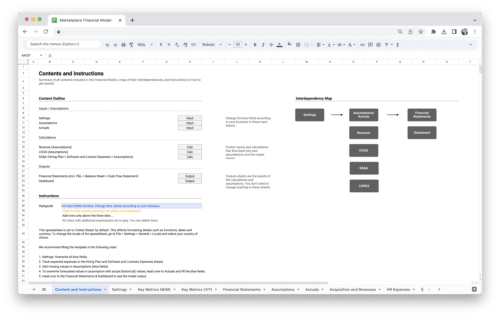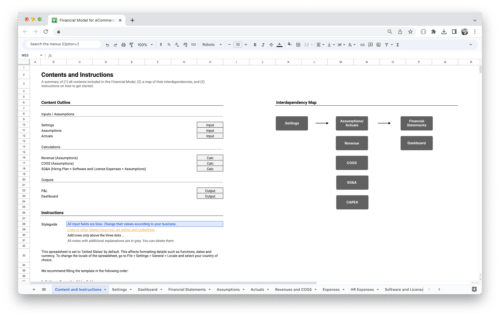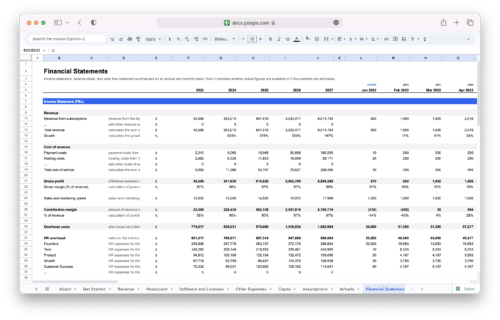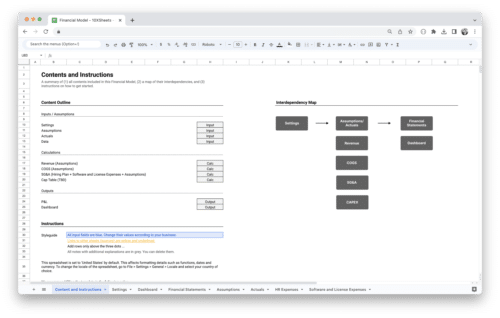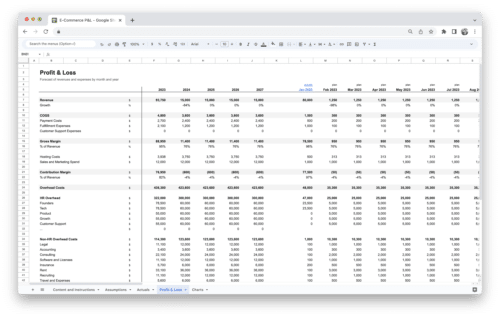
Are you wondering how to attract top talent to your startup without stretching your budget? Advisory shares could be the answer. These equity-based incentives offer a way to reward experienced advisors who can provide crucial guidance and connections, even when cash is tight.
This guide breaks down everything you need to know about advisory shares, from what they are and how they differ from other types of equity to structuring, legal implications, and best practices for implementation. Whether you’re a founder looking to leverage the expertise of seasoned professionals or an advisor interested in understanding your potential compensation, this guide will provide clear, practical insights to help you navigate the world of advisory shares effectively.
Understanding Advisory Shares
Advisory shares are a specific form of equity compensation designed to reward individuals who provide valuable advice and services to a company. Let’s delve into what advisory shares are, their importance for startups, and how they compare to other types of equity.
What Are Advisory Shares?
Advisory shares are a type of stock or equity granted to advisors in exchange for their expertise, guidance, or services. These shares are usually a small percentage of the company’s total equity and are often issued to individuals who can provide significant strategic value without requiring immediate cash compensation.
These shares often come with a vesting schedule, which means that the advisor earns their shares over time, rather than receiving them all at once. This approach ensures that advisors remain motivated to contribute positively to the company over a longer period.
Importance and Purpose of Advisory Shares in Startups
Advisory shares serve several crucial purposes in startups:
- Attract Talent: Startups often have limited cash flow and use advisory shares to attract experienced individuals who can offer guidance and connections crucial for growth.
- Align Interests: By offering equity, startups align the interests of advisors with those of the company, as both parties benefit from the company’s success.
- Motivate and Retain: Vesting schedules ensure that advisors are motivated to stay involved with the company over the long term.
- Cost-Effective Compensation: Instead of paying high cash salaries, startups can offer equity, which can be more manageable for cash-strapped companies.
Differences Between Advisory Shares and Other Equity Types
Understanding how advisory shares differ from other types of equity helps clarify their unique role:
- Common Shares: These are typically issued to founders, employees, and sometimes early investors. Common shares often come with voting rights and are the last in line for payouts in the event of liquidation.
- Preferred Shares: Issued mainly to investors, preferred shares offer advantages like dividend preferences and priority in liquidation scenarios. These shares are less common for advisors and are usually reserved for more significant financial backers.
- Advisory Shares: These shares are specifically designed for advisors. Unlike common or preferred shares, advisory shares are often subject to vesting schedules and are tied to the advisor’s performance and continued involvement with the company.
Typical Vesting Schedules for Advisory Shares
Vesting schedules for advisory shares ensure that advisors earn their equity over time, promoting continued involvement and performance. Common vesting schedules include:
- Cliff Vesting: Under this schedule, the advisor receives all their shares after a set period, known as the cliff. For example, a 12-month cliff means the advisor receives 100% of their shares after one year.
- Gradual Vesting: Shares vest incrementally over a specified period. For instance, a 2-year gradual vesting schedule might mean the advisor earns 1/24th of their shares each month for two years.
- Milestone-Based Vesting: Shares are tied to specific milestones or achievements, such as completing a major project or securing a key partnership.
The Role of Advisors
Advisors play a vital role in the growth and success of startups by providing valuable insights and support. Understanding the different types of advisors and their responsibilities helps you effectively utilize advisory shares.
What Constitutes an Advisor?
An advisor is typically an individual with significant experience, expertise, or connections relevant to the startup’s industry or business model. Advisors are not employees but are engaged to provide strategic guidance and support. Key qualities of an advisor include:
- Expertise: Specialized knowledge in areas like technology, finance, or marketing.
- Experience: Previous experience in similar startups or industries.
- Network: Valuable connections that can open doors to new opportunities, partners, or investors.
Types of Advisors
Advisors come in various forms, each offering unique benefits to a startup:
- Industry Experts: These advisors provide deep knowledge and insights into a specific industry, helping the company navigate market trends, challenges, and opportunities. For example, a seasoned tech executive might advise a startup on product development and market entry strategies.
- Financial Consultants: Financial advisors assist with planning, fundraising, and managing financial risks. They may help with financial forecasting, investment strategies, or capital raising efforts.
- Strategic Partners: These advisors bring connections and partnership opportunities. They might facilitate strategic alliances, joint ventures, or customer introductions that can significantly impact the company’s growth trajectory.
Responsibilities and Contributions of Advisors
Advisors contribute to a startup in several important ways:
- Strategic Guidance: Providing high-level advice on business strategy, market positioning, and growth plans.
- Networking: Leveraging their connections to introduce potential customers, partners, or investors.
- Mentorship: Offering support and mentorship to founders and key team members, helping them navigate challenges and make informed decisions.
- Feedback: Providing critical feedback on business plans, product development, and operational strategies to improve overall performance.
By understanding these aspects of advisory shares and the role of advisors, you can better leverage equity compensation to attract and retain the right talent for your startup.
How to Structure Advisory Shares?
Structuring advisory shares involves more than just determining the percentage of equity to offer. It requires careful consideration of how to allocate equity, negotiate terms, and address legal and financial implications.
Determining the Amount of Equity to Allocate
Deciding how much equity to grant to an advisor is a critical step that depends on several factors:
- Advisor’s Role and Impact: Consider the significance of the advisor’s contribution to your business. Advisors who offer substantial strategic value or have high-profile connections might warrant a larger equity stake compared to those providing more limited support.
- Stage of the Company: Early-stage startups often allocate a higher percentage of equity to attract and retain top advisors, as these companies typically have fewer financial resources. As the company matures, the percentage offered may decrease.
- Equity Benchmarks: Research industry standards and benchmarks for advisory shares. For example, in early-stage startups, advisors might receive between 0.25% and 1% of the company’s equity, whereas later-stage companies might offer less.
- Equity Dilution: Understand how granting advisory shares will impact your overall equity structure and dilution. Ensure that the total equity granted to advisors does not overly dilute the ownership of founders and early investors.
Negotiation Tips for Equity Distribution
Negotiating equity distribution requires balancing fairness with strategic interests. Here are some tips to help you navigate the process:
- Define Expectations Clearly: Before negotiations, outline what you expect from the advisor in terms of time commitment, deliverables, and milestones. This clarity will help in determining an appropriate equity allocation.
- Benchmark Against Industry Standards: Use industry benchmarks as a reference point to ensure that the equity offer is competitive and fair. This helps in setting realistic expectations and avoiding overcompensation.
- Be Prepared to Compromise: Negotiations may require flexibility. Be open to discussing alternative forms of compensation, such as a combination of equity and cash, especially if the advisor’s initial equity request is too high.
- Document Agreements Thoroughly: Once terms are agreed upon, document them clearly in a formal advisory agreement. This agreement should detail the equity percentage, vesting schedule, and any specific performance metrics.
Legal and Financial Considerations in Structuring Shares
Properly structuring advisory shares involves understanding legal and financial implications to ensure compliance and avoid potential issues.
- Legal Agreements: Draft comprehensive legal agreements that outline the terms of the equity grant, including an advisory agreement and stock option agreement. These documents should specify the number of shares, vesting schedule, and any conditions tied to the shares.
- Tax Implications: Be aware of the tax consequences for both the startup and the advisor. Advisors may face income tax at the time of vesting or exercise, while startups might need to account for the equity grant in their financial reporting.
- Cap Table Management: Maintain an up-to-date capitalization table (cap table) that reflects the issuance of advisory shares. This helps in tracking equity distribution and understanding its impact on ownership stakes.
- Regulatory Compliance: Ensure compliance with securities regulations and any relevant legal requirements. Consult with legal and financial professionals to address any regulatory issues related to the issuance of equity.
Advisory Shares Examples
Understanding advisory shares through real-world examples can help you grasp how they function in practice. Here are several scenarios illustrating how different startups utilize advisory shares to attract and retain valuable talent.
Early-Stage Tech Startup
Scenario: A tech startup is looking to bring on a renowned industry expert to help shape its product development and open doors to potential investors. However, the startup has limited cash resources.
Advisory Shares Structure: The startup offers the expert 0.5% of equity in the form of advisory shares, with a two-year vesting schedule that includes a one-year cliff. This means the advisor earns 0.25% of equity after one year, with the remaining 0.25% vesting gradually over the next year.
Impact: By offering advisory shares, the startup attracts a high-caliber advisor who provides critical guidance and connections. The equity incentive aligns the advisor’s interests with the company’s long-term success, ensuring they remain engaged and motivated to contribute.
Growth Stage E-commerce Business
Scenario: An e-commerce company in its growth stage wants to bring in a financial consultant to help streamline its operations and prepare for a potential public offering. The company prefers to offer equity rather than a high cash compensation.
Advisory Shares Structure: The company grants the financial consultant 0.75% of equity, with a performance-based vesting schedule. The shares vest based on the achievement of key financial milestones, such as reducing operating costs by a specific percentage and improving profit margins.
Impact: The performance-based vesting schedule motivates the consultant to deliver measurable improvements, directly tying their compensation to the company’s financial health. This arrangement aligns the consultant’s goals with the company’s strategic objectives.
Established Startup Seeking Strategic Partnerships
Scenario: An established startup wants to leverage the network of a prominent business leader to forge strategic partnerships and enhance its market position.
Advisory Shares Structure: The startup offers the business leader 1% of equity with a gradual vesting schedule over three years. The shares vest at a rate of 1/36th per month, ensuring the advisor remains engaged over a longer period.
Impact: By granting 1% equity, the startup secures the business leader’s commitment and access to their extensive network. The gradual vesting ensures continuous involvement and contribution, enhancing the startup’s ability to build valuable partnerships and expand its market presence.
Tech Startup with Milestone-Based Advisory Shares
Scenario: A tech startup needs help from a product development expert to refine its technology and achieve specific technical milestones. The startup is willing to offer equity linked to specific achievements.
Advisory Shares Structure: The startup grants the product development expert 0.4% of equity, with shares vesting upon the completion of predefined milestones. For example, 0.2% vests after the completion of the first prototype and the remaining 0.2% upon successful beta testing and launch.
Impact: This milestone-based vesting aligns the advisor’s incentives with the startup’s key product development goals. It ensures that the advisor’s compensation is directly tied to their contributions, motivating them to achieve critical milestones.
High-Profile Advisor for Market Expansion
Scenario: A startup aiming for market expansion seeks the expertise of a high-profile advisor with experience in international markets. Given the advisor’s prominence and the startup’s budget constraints, equity compensation is a preferred option.
Advisory Shares Structure: The startup offers the advisor 0.6% of equity with a one-year cliff followed by monthly vesting over the subsequent year. The advisor’s role includes providing strategic advice on market entry and leveraging their network to facilitate international partnerships.
Impact: Offering 0.6% equity incentivizes the high-profile advisor to leverage their expertise and connections for the startup’s international expansion. The one-year cliff ensures that the advisor commits to providing significant value before receiving any equity, while the gradual vesting encourages continued involvement.
Each of these examples illustrates how advisory shares can be tailored to meet the needs of different types of startups and advisors. By understanding these scenarios, you can better design your own advisory share arrangements to attract and retain top talent in a way that aligns with your company’s goals and resources.
Vesting and Performance Metrics
Vesting and performance metrics are crucial in ensuring that advisory shares are awarded in alignment with the advisor’s contributions and the company’s goals.
Common Vesting Schedules
Vesting schedules dictate how and when advisors earn their equity. Common schedules include:
- Cliff Vesting: With cliff vesting, advisors receive all their shares after a predetermined period, known as the cliff. For instance, a one-year cliff means the advisor receives their full equity grant after completing one year with the company. This approach can motivate advisors to stay engaged for at least the cliff period.
- Gradual Vesting: This method involves incremental vesting of shares over time. For example, a two-year gradual vesting schedule might mean that the advisor earns 1/24th of their shares each month for two years. This gradual approach ensures continuous motivation and alignment with the company’s long-term goals.
- Milestone-Based Vesting: Equity is tied to achieving specific milestones or performance goals. For instance, an advisor might earn a portion of their shares upon completing a key project or securing a significant partnership. This type of vesting aligns the advisor’s incentives with the achievement of critical business objectives.
Linking Performance Metrics to Vesting
Performance metrics help ensure that advisors are rewarded based on their contributions and achievements. Here’s how to link metrics to vesting:
- Define Clear Metrics: Establish specific, measurable performance metrics that align with your company’s goals. These might include achieving sales targets, securing partnerships, or completing product development phases.
- Set Milestones: Create milestone-based vesting schedules where advisors earn shares upon reaching predefined goals. This approach provides clarity and motivates advisors to contribute towards these key objectives.
- Review and Adjust: Regularly review performance metrics and adjust them if necessary to reflect changes in business priorities or advisor roles. Flexibility in adjusting metrics can help maintain alignment between advisor contributions and rewards.
Handling Early Termination or Departure of Advisors
Managing the departure of an advisor, whether due to early termination or voluntary exit, requires careful handling to address equity compensation:
- Unvested Shares: Typically, any shares that have not yet vested are forfeited if the advisor leaves before the vesting period is complete. Ensure that this is clearly outlined in the advisory agreement.
- Vested Shares: Advisors may retain any shares that have already vested. It’s important to clearly define how vested shares are handled upon departure, including any potential buyback options or restrictions.
- Exit Terms: Include exit terms in the advisory agreement that specify how and when the advisor can exercise or sell their vested shares. This helps prevent disputes and provides a clear process for handling equity upon departure.
By carefully structuring advisory shares and implementing effective vesting schedules, you can align advisor incentives with your company’s goals and ensure a fair and motivating compensation system.
Legal and Tax Implications
Navigating the legal and tax aspects of advisory shares is crucial for ensuring compliance and managing potential risks. Understanding these implications can help you avoid legal pitfalls and financial surprises.
Key Legal Agreements
Several key legal agreements are involved in the issuance and management of advisory shares. These agreements lay the groundwork for the advisor’s compensation and outline the terms of their engagement.
- Advisory Agreements: This is a formal contract between the startup and the advisor, detailing the advisor’s role, responsibilities, compensation, and any equity grants. It specifies the terms of the advisory relationship, including duration, expectations, and any performance metrics tied to equity vesting.
- Stock Option Agreements: If advisory shares are granted as stock options, a stock option agreement is essential. This document outlines the terms under which the advisor can purchase company stock, including the exercise price, vesting schedule, and expiration date. It ensures that both parties understand the rights and obligations associated with the stock options.
- Equity Grant Agreements: For direct equity grants, this agreement specifies the number of shares awarded, the vesting schedule, and any conditions that must be met for the shares to vest. It also covers the transferability of shares and any restrictions on their sale.
Tax Consequences for Advisors and Startups
Both advisors and startups need to be aware of the tax implications associated with advisory shares. Proper understanding can help in planning and compliance.
- For Advisors: The tax treatment of advisory shares can vary depending on whether they are granted as stock options or direct shares. Advisors may face income tax when shares vest or are exercised. In the case of stock options, the tax implications depend on whether they are classified as incentive stock options (ISOs) or non-qualified stock options (NSOs). ISOs may have more favorable tax treatment but come with specific requirements.
- For Startups: Issuing advisory shares can impact a startup’s financial statements and tax filings. The value of the equity granted needs to be accounted for in the company’s financial records. Additionally, the company must ensure compliance with tax regulations related to equity compensation, including reporting requirements and potential deductions.
Best Practices for Compliance and Record-Keeping
Maintaining compliance and accurate records is vital for managing advisory shares effectively.
- Document Everything: Keep thorough documentation of all equity grants, including advisory agreements, stock option agreements, and any amendments. This documentation should detail the terms of the equity, vesting schedules, and performance metrics.
- Regular Reviews: Conduct regular reviews of your equity compensation practices to ensure compliance with legal and regulatory requirements. This includes monitoring changes in tax laws and adjusting your agreements and practices accordingly.
- Consult Professionals: Work with legal and financial professionals to ensure that all agreements are legally sound and that you are meeting all tax obligations. Their expertise can help you navigate complex issues and avoid potential pitfalls.
- Maintain Accurate Records: Keep an updated capitalization table (cap table) that reflects all equity grants and their status. Accurate record-keeping helps in managing dilution and understanding the impact of new equity issuances on existing shareholders.
Best Practices for Implementing Advisory Shares
Implementing advisory shares effectively requires careful planning and execution to ensure that both the startup and the advisors benefit from the arrangement. Here are some best practices to follow:
- Choose the Right Advisors: Select advisors with relevant expertise and experience who can provide significant value to your business. Ensure that their skills and network align with your company’s needs.
- Define Clear Terms: Clearly outline the terms of the equity grant, including the percentage of equity, vesting schedule, and performance metrics. Transparency helps manage expectations and avoids misunderstandings.
- Communicate Expectations: Clearly communicate what is expected from the advisor in terms of time commitment, deliverables, and contributions. This helps in setting clear goals and measuring performance.
- Negotiate Fairly: Approach equity negotiations with fairness and flexibility. Benchmark against industry standards and be open to discussing alternative forms of compensation if needed.
- Document Agreements: Ensure that all agreements are documented thoroughly and legally sound. This includes advisory agreements, stock option agreements, and any amendments.
- Implement Effective Vesting: Use vesting schedules to align advisor incentives with long-term company goals. Common approaches include cliff vesting, gradual vesting, and milestone-based vesting.
- Monitor Performance: Regularly review the advisor’s performance against agreed-upon metrics and provide feedback. This helps in ensuring that the advisor remains engaged and contributes effectively.
- Manage Equity Wisely: Keep track of how equity grants affect your cap table and overall ownership structure. This helps in understanding the impact of new equity issuances on existing shareholders.
- Ensure Compliance: Stay updated on legal and tax regulations related to equity compensation. Work with professionals to ensure compliance and avoid potential legal or financial issues.
By following these best practices, you can implement a successful advisory share program that attracts and retains valuable advisors while aligning their interests with the success of your startup.
Conclusion
Understanding advisory shares can significantly impact your startup’s growth and success. By offering equity to advisors, you not only attract valuable expertise and connections but also align their interests with the long-term goals of your company. This guide has provided a thorough overview of how advisory shares work, from determining the right amount of equity and negotiating terms to the legal and tax implications involved. With this knowledge, you can make informed decisions and set up a compensation structure that motivates and retains top advisors while managing your company’s resources wisely.
Implementing advisory shares effectively requires careful planning and attention to detail. By following best practices, such as setting clear expectations, maintaining accurate records, and ensuring compliance with legal and tax requirements, you can maximize the benefits of advisory shares for both your startup and your advisors. Whether you’re a founder looking to build a strong advisory board or an advisor navigating your equity compensation, applying the principles outlined in this guide will help you make the most of this valuable tool.
Get Started With a Prebuilt Template!
Looking to streamline your business financial modeling process with a prebuilt customizable template? Say goodbye to the hassle of building a financial model from scratch and get started right away with one of our premium templates.
- Save time with no need to create a financial model from scratch.
- Reduce errors with prebuilt formulas and calculations.
- Customize to your needs by adding/deleting sections and adjusting formulas.
- Automatically calculate key metrics for valuable insights.
- Make informed decisions about your strategy and goals with a clear picture of your business performance and financial health.

